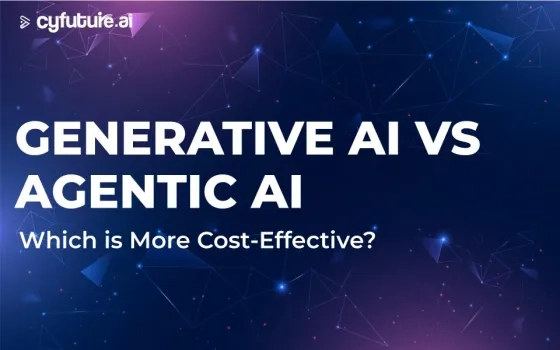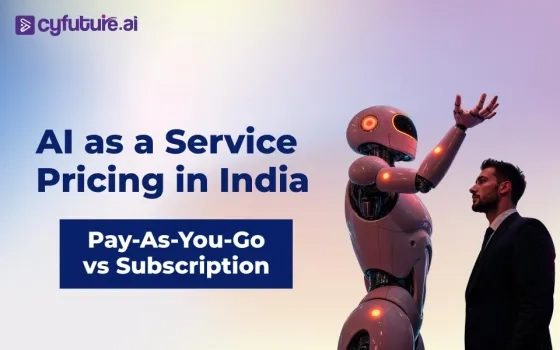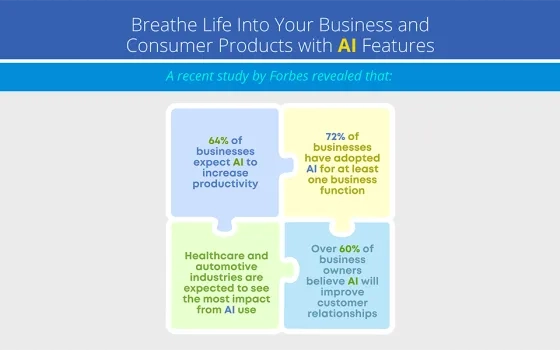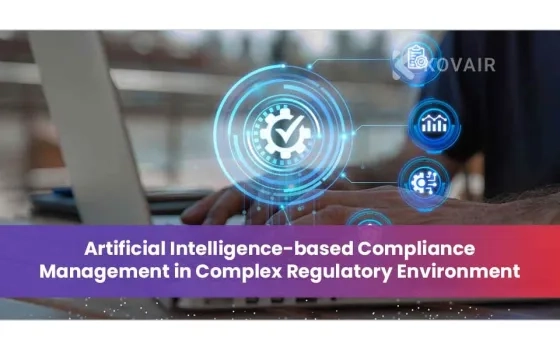Generative AI (GenAI), particularly models powered by Large Language Models (LLMs), offers transformative potential across industries. However, without proper planning, the operational costs associated with deploying these models can escalate quickly. This article demonstrates how prompt engineering drives significant cost savings while delivering highly customized outputs for various use cases. This article will also provide a comprehensive analysis of LLM models, their pricing structure, and the operational cost implications. Additionally, it outlined strategies for optimizing expenses, fine-tuning model attributes, and implementing guardrails for efficient operations. This article also addresses the security implications of prompt engineering and introduce specific techniques that enable businesses scale GenAI in a financially sustainable way.
Introduction
GenAI, powered by LLMs such as OpenAI’s GPT series, Google’s PaLM, Anthropic's Claude, and Meta’s Llama has revolutionized industries by enabling machines to generate text, code, and even creative outputs. These models are potent but resource-intensive, and their improper use can lead to skyrocketing operational costs.
Prompt engineering has emerged as a vital discipline that can help businesses leverage LLMs effectively and efficiently, balancing both performance and cost. This paper will explore how careful manipulation of prompts can reduce costs while maintaining high-quality outputs.
A Quick Overview of LLM Pricing Model
LLMs are neural networks trained on extensive datasets. These models operate by predicting the next token in a sequence based on the input text or "prompt". Model performance scales with factors such as the number of model parameters, the length of the input context, and the volume of training data. The cost of utilizing LLMs is typically influenced by several factors:
- Number of tokens processed (both in input and output)
- Model size (larger models cost more to use)
- API call frequency
LLM pricing structures differ across service providers and are primarily driven by usage metrics. Below is an analysis of current pricing models and a comparison of associated charges as of the time of writing. It is crucial to acknowledge that these costs are subject to fluctuation, and future readers—especially those reviewing this article six months or more after publication, may observe difference in unit pricing.
|
LLM Pricing Model Comparison
|
|
Model Name
|
Pricing/1000 input tokens
|
Pricing/1000 input tokens
|
|
Open AI’s GPT-4
|
|
GPT-4
GPT-4 Turbo
|
$0.03
$0.01
|
$0.06
$0.03
|
|
Anthropic’s Claude
|
|
Claude 3.5 Sonnet
Claude 3 Haiku
Claude 3 Sonnet
Claude Instant
|
$0.003
$0.00025
$0.003
$0.0008
|
$0.015
$0.00125
$0.015
$0.0024
|
|
Meta’s Llama
|
|
Llama 3.2 Instruct (1B)
Llama 3.2 Instruct (3B)
Llama 3.2 Instruct (11B)
Llama 3.2 Instruct (90B)
|
$0.0001
$0.00015
$0.00035
$0.002
|
$0.0001
$0.00015
$0.00035
$0.002
|
|
Amazon’s Titan
|
|
Amazon Titan Text Premier
Amazon Titan Text Lite
Amazon Titan Text Express
Amazon Titan Text Embeddings
|
$0.0005
$0.00015
$0.0002
$0.0001
|
$0.0015
$0.0002
$0.0006
n/a
|
As demonstrated in the table above, these examples represent only a subset of available LLM model pricing structures. While the cost per 1,000 input or output tokens may seem negligible, the cumulative effect can result in significant monthly expenses, particularly for production workloads.
To comprehend the pricing model more thoroughly, it is essential to understand the concepts of input and output tokens. Tokens are fragments of text fed into or generated by the LLM. They can consist of words, characters, or subwords. In this context, input tokens are the text sent to the model, while output tokens are the text produced by the model.
For instance, in the sentence "The quick brown fox," the input tokens are:
- "The," "quick," "brown," and "fox."
If the model completes the sentence with "jumps over the lazy dog," the output tokens would be:
- "jumps," "over," "the," "lazy," and "dog."
Each token contributes to the total cost, as LLMs typically charge based on the number of tokens processed, encompassing both input and output.
The Importance of Effective Prompt Engineering
Prompt engineering involves crafting the optimal input text (prompt) to elicit the best possible response from an LLM, thus improving output quality and reducing the need for multiple attempts, which can inflate costs.
Why Prompt Engineering Matters for Cost-Efficiency:
- Token Optimization: Every interaction with an LLM is token-based. Efficient prompts reduce token usage, limiting unnecessary charges.
- Improved Output Quality: Well-crafted prompts reduce the need for re-queries and multiple interactions.
- Speed and Efficiency: Better prompts can generate more accurate responses faster, leading to faster task completion.
- Reduced Resource Usage: Optimizing for context length and request frequency lowers computational load.
Example of Prompt Engineering
Consider this example, where a user needs a quick summary on ‘What is cloud computing?” for a high-school seminar.
Basic Prompt: "what is cloud computing?
Effective Prompt: “Instruction: write a response to explain what cloud is computing.
Context: I will attend a high-school event to explain cloud computing concepts to 10th graders
Output Indicator: explain the cloud computing concepts with real-life examples
Answer shouldn’t exceed more than 100 words.”
Here is the side-by-side comparison of the output:

Breakdown of the Effective Prompt
- Specificity: It specifies the target audience (high-school event and 10th graders). This context helps the AI tailor its responses appropriately.
- Structure: It asks for a specific format (explanation with real-life example, answer is not more than 100 words), guiding the AI on how to organize the information.
- Output Indicator: It specifies the format and desired tone, helping the AI understand the type of language to use.
- Negative Prompt: With answer shouldn’t exceed more than 100 words, it explicitly instructs the AI model on what not to include or do in its response
Technical Specifications
- Token Usage: By limiting the number of tokens in the output response, organization can save costs associated with token processing.
- Model Efficiency: A well-crafted prompt ensures the model can quickly understand and generate the desired output, improving overall efficiency.
Cost-Escalating Factors in LLMs
There are several model attributes that, if not controlled, can drastically increase costs:
- Token Count: Many businesses overlook token limits. Each API request typically has a token cap (e.g., GPT-4 caps at 8k to 32k tokens per query). Exceeding token limits forces truncation or necessitates multiple requests, escalating costs.
- Model Size: Using larger models (e.g., GPT-4 over GPT-3) is more expensive, even for simple queries. Businesses must select the right model based on their requirements.
- Request Frequency: Repeated queries, especially poorly designed ones, can cause an accumulation of token charges. It’s crucial to ensure that each request maximizes the value extracted from the model.
- Context Management: In conversation-based models, maintaining too long of a context window increases the number of tokens used in each request. It’s advisable to trim unnecessary context.
- Iteration Loops: Retraining or fine-tuning LLMs without refining the scope or goals can lead to unnecessary compute and storage costs.
Key Guardrails to Control LLM Operational Costs:
- Token Limits: Monitor token usage per request. Set hard limits on the number of tokens per API call to avoid unnecessary processing.
- Model Selection: Opt for smaller models when applicable. Use larger models only when the complexity of the task justifies it.
- Frequency Management: Reduce the number of queries by refining each one with effective prompt engineering.
- Context Pruning: Regularly trim the conversation or context history to prevent unneeded token consumption.
Performance Tuning and Guardrails for Effective Operations
To balance cost-efficiency with performance, implement the following strategies:
- Model Tuning: Experiment with lower temperatures (for more predictable outputs) or adjust top-p and top-k parameters to control randomness in responses.
- Throttling: Set API throttling limits to avoid exceeding budgetary constraints.
- Resource Autoscaling: Implement autoscaling solutions to ensure compute resources are dynamically allocated based on workload demand.
- Custom Model Training: Instead of using the largest available model, custom-train smaller models on domain-specific data to improve relevance while reducing costs.
Conclusion
Generative AI presents both vast opportunities and challenges for enterprises. While LLMs provide significant value through their versatility and power, the operational costs associated with their use can quickly escalate. Through effective prompt engineering, organizations can significantly improve output quality, reduce token usage, and optimize costs. Proper cost-control measures, performance tuning, and security protocols will ensure that organizations get the most value out of their GenAI deployments.
With the right techniques and guardrails, businesses can scale LLM usage while maintaining financial sustainability, aligning with both performance and compliance requirements.
About the Author
Pallab, a Senior Director, and Enterprise Solution Architect, drives cloud initiatives and practices at Movate. With over 17 years of experience spanning diverse domains and global locations, he’s a proficient Multi-Cloud Specialist. Across major cloud Hyperscalers, Pallab excels in orchestrating successful migrations of 50+ workloads. His expertise extends to security, Bigdata, IoT, and Edge Computing. Notably, he’s masterminded over 20 cutting-edge use cases in Data Analytics, AI/ML, IoT, and Edge Computing, solidifying his reputation as a trailblazer in the tech landscape.















